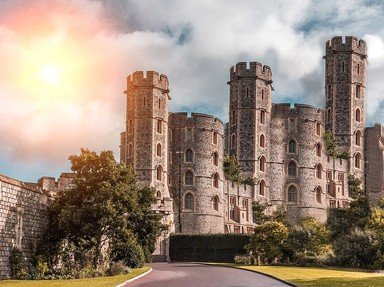Quiz Answer Key and Fun Facts
1. What is left of Scotney Castle is in ruin. What fate befell the castle leaving it in this state?
2. In Scotney Castle gardens, you can see this curious thatched structure. For what purpose was it built?
3. In Scotney Castle, the door pictured leads to a "priest's hole", used to hide Catholic priests during the persecution of Catholics under Elizabeth I. True or false?
4. A quarry in the grounds of Scotney Castle is now a garden feature. Stone from this quarry built which structures in the castle grounds?
5. The gardens in front of the "new" castle at Scotney Castle are left uncultivated. For what reason have they not been landscaped like the rest of the gardens?
6. The tower featured is part of what remains of the mansion that once occupied the grounds of Sissinghurst Castle. During which period of British history was this mansion built?
7. In 1930, Sissinghurst Castle was purchased by which famous female author?
8. Many of the gardens at Sissinghurst Castle are associated with colours. Which IS NOT a garden found in the grounds that is associated with the name of a colour?
9. True or False: The remains of the moat found in the orchard are all that is left of the original Sissinghurst Castle that once stood on the site?
10. Along with Sissinghurst Castle itself, the National Trust also owns the farm and some surrounding farm land. What was the purpose of the building pictured that was once part of the farm?
Source: Author
mcsurfie
This quiz was reviewed by FunTrivia editor
stedman before going online.
Any errors found in FunTrivia content are routinely corrected through our feedback system.

